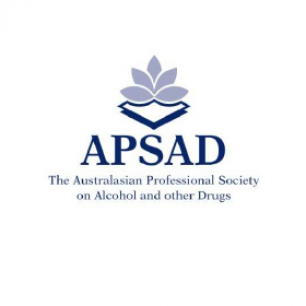This media release was first issued by Moore Public Relations on behalf of the Australian Professional Society on Alcohol and other Drugs (APSAD).
With ecstasy use declining in Australia, there is strong potential for the gap to be filled by a dizzying and rapidly growing array of new potentially more addictive and harmful synthetic stimulant and psychedelic party drugs, according to leading drug researchers.
With drug producers rapidly adapting their products to stay ahead of prohibition efforts, consumers are receiving little information about the adverse side effects of more than 40 new and mostly illegal drugs such as mephedrone (Miaow), DMT methylone and 2CB, a situation experts say has substantial public health ramifications.
The issue of emerging psychoactive substances is being discussed today by a range of local and international experts at the 2011 Conference of the Australasian Professional Society on Alcohol and other Drugs (APSAD) in Hobart.
Dr Lucy Burns from the National Drug and Alcohol Research Centre said its drug trends program has confirmed the declining interest in ecstasy. This may be due to reduced purity as an unintended consequence of increased regulation of the drug’s precursors.
“The question is whether people will revert to older drugs or experiment with the new ones, but people who use ecstasy also tend to prefer other stimulants,” Dr Burns said.
“We haven’t yet seen the spike in emerging psychoactive substances in Australia as in the UK, but these drugs can have unpleasant effects and harms have been reported.”
The University of Tasmania’s Dr Raimondo Bruno will present research that shows about a third of heavy users of ecstasy are also using the new drugs, some of which have chemical profiles that create high risk of drug interactions and significant adverse health effects.
“Mephedrone has broadly similar effects to ecstasy, however it has a higher potential for dependence, and ‘cravings’ are much greater for mephedrone than for ecstasy,” Dr Bruno said.
“People need to be very careful with these unknown drugs, especially if they have health issues that could be exacerbated by psychoactive drugs - people with heart problems, mental health problems, or those using other medications which could interact.”
Dr Adam Winstock, a consultant psychiatrist and addiction medicine specialist from the Maudsley Hospital in London and Director of Global Drug Survey, will present research showing the majority of first-time mephedrone users admitted they did not understand basic information about the drug such as the time required to take effect, the likely duration of effects, potential interactions with other drugs or possible after effects.
“There’s buckets of ignorance around these substances, which presents a challenge for minimising harm associated with drug use,” Dr Winstock said.
“What is needed are credible sources of information that treat drug users as intelligent people who don’t want to experience harm because of their drug use. That friends and families were the most commonly identified sources of information and not government websites suggests a credibility and communication gap that needs to be addressed.
“Knowing the basics about drug effects can help people reduce their risk of harm. People more commonly run into difficulties if they take too much too quickly, often as a result of redosing too soon or mixing drugs. So if you know the peak effect comes on two to four hours after a dose, you might be less likely to re-dose or take another drug in the next hour or two.
“Our research also showed 7-15 per cent of people consistently reported not caring whether they knew about how long a drug would last or what the risks were. These are probably the same group of people who will drive drunk, have unsafe sex and harm themselves or others.”
Dr Winstock said emergent drugs like mephedrone with little history of use are a wakeup call for public health and treatment providers.
Mephedrone is the fourth most commonly used drug in the UK after cannabis, ecstasy and cocaine, and more than 70 per cent of poly-drug users in the UK dance music scene have used mephedrone since it was banned last year.
“It’s a rapidly shifting marketplace – a cat and mouse game – as manufacturers try to get around regulations and law enforcers do their best to control these substances while health agencies try to minimise the harm and educate users,” Dr Winstock said.
“Trying to ban drugs on the internet is like trying to block a sink with a sieve. Legislation in many countries has resulted in displacement of novel drugs to the illicit market, the rapid replacement of banned substances with uncontrolled promotion of even lesser known substances, and a return to illicit drug use by others.”
The 2011 APSAD Conference is being held in Hobart from 14-16 November and brings together 500+ delegates and 160 Australian and overseas experts on alcohol and other drugs from a range of disciplines including medicine, neuroscience, psychology, epidemiology, policy, sociology, treatment, education and law.



